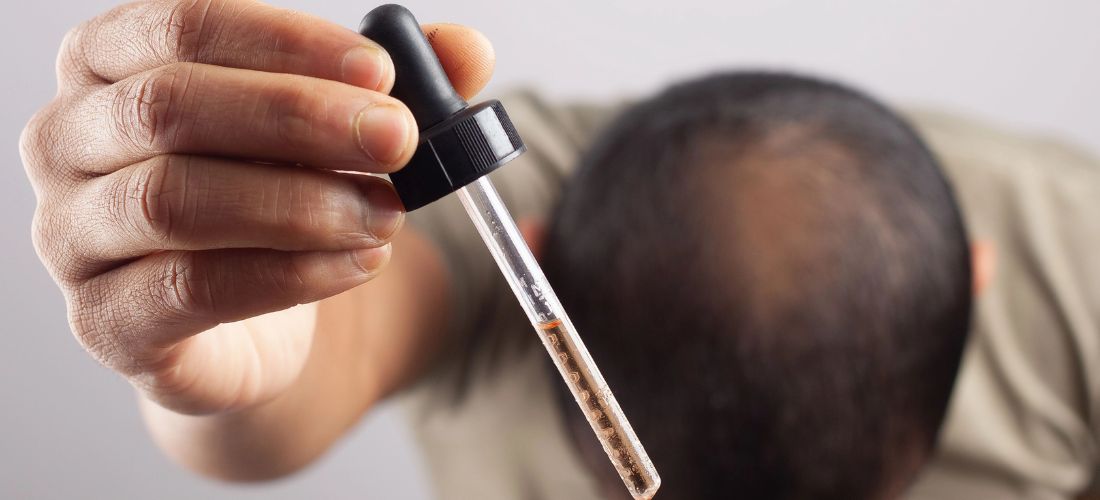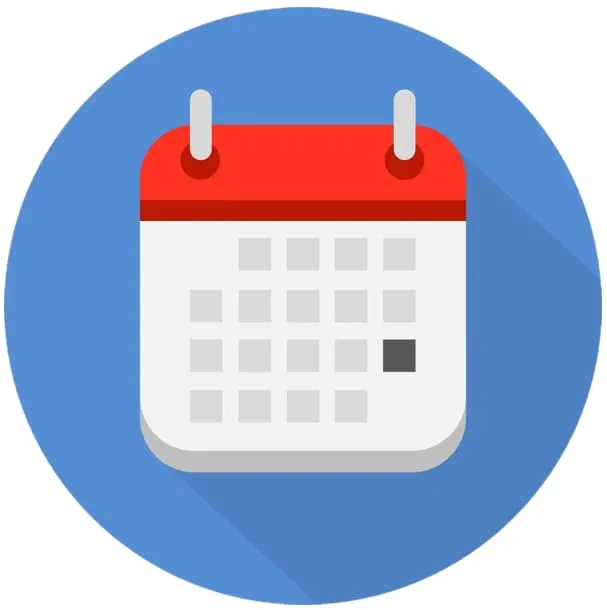Minoxidil (Regaine) Dosage Guide for Treating Hair Loss

Content by

Last Updated
Treat hair loss symptoms:
Buy Regaine for Men today.
Table of Contents
- Key Findings
- What is Minoxidil?
- How to use Minoxidil: Dosage Guidelines
- Getting the best results from Minoxidil
- Using Minoxidil safely: Side effects and warnings
- Checking your results and adjusting how much you use
- Start Your Minoxidil Journey with Chemist Click
Key Findings
- Stimulates hair growth by boosting blood flow to your scalp
- Proven to reduce hair loss and slow down hair thinning
- Treatment requires consistent use to see maximum results
- Results usually within the first three to six months, when used as directed
What is Minoxidil?
Minoxidil (Regaine) is a topical hair loss treatment. It was originally developed as a medicine for high blood pressure in the 1970s, but over time, it was discovered to be effective in helping with hair growth, which led to the development of the topical formulation. When applied to the scalp, it widens small arteries and increases blood flow to blood vessels, delivering a boost of oxygen and nutrients.
Studies have found that people with Androgenetic Alopecia see superior hair growth and a decrease in hair loss when using the Minoxidil 5% formulations.
It is also available as a high-strength minoxidil 6% topical spray, formulated in a UK NHS-approved lab. The other strengths available are:
- 2% Minoxidil, which is clinically proven and approved to treat female pattern hair loss.
- 5% Minoxidil is formulated to be used by men twice a day and women once a day.
How to use Minoxidil: Dosage Guidelines
For Women
The 2% solution is generally recommended to be used once or twice daily. Most people apply 1ml directly to the scalp on the location where thinning is present.
This concentration is less likely to cause irritation or unwanted hair growth on the face or body.
The 5% foam formulation is approved for once daily use but has a slightly higher risk of side effects like scalp dryness or facial hair growth. Therefore, the 2% formulation is typically recommended.
When applying the treatment, ensure your scalp is dry and use the product gently on the scalp by parting thinning areas. Leave the solution to fully dry before styling your hair.
It can take 3–6 months of daily use to see visible improvement. It’s important to note that stopping treatment typically leads to the reversal of any hair growth you may have achieved.
For Men
The standard dosage of the 5% solution or foam is 1ml. It is applied twice daily directly to the areas of thinning or receding hair, which are usually at the crown and vertex of the scalp.
The 2% solution isn’t used as much, generally reserved for men who experience scalp sensitivity or irritation with the stronger version.
Regardless of the formulation, it’s important to apply the product correctly, paying attention to the areas where there are noticeable changes, such as thinning and applying it directly to a dry scalp.
Avoid exceeding the recommended dose because this won't improve effectiveness and may increase the risk of side effects.
Oral vs Topical Minoxidil
Oral minoxidil is prescribed in low doses for hair loss as an alternative to topical minoxidil.
Unlike the topical version, which is applied directly to the scalp, oral minoxidil stimulates hair growth from within. Some people prefer it because of its convenience, especially when irritation or poor results with topical formulas have occurred.
Studies suggest that low-dose oral minoxidil can be equally effective as topical versions after 6 months of treatment. However, because it affects the whole body, it can carry a higher risk of side effects like swelling, dizziness or changes in blood pressure, and it should only be taken under medical supervision.
Getting the best results from Minoxidil
To maximise the benefits of Minoxidil, consistency is most important.
You should apply it exactly as directed, usually once or twice daily. This will ensure the hair follicles remain continuously stimulated.
If you skip doses or stop using the treatment, it can hamper progress and even reverse any regrowth gained. You must apply it directly to a clean, dry scalp and allow it to fully absorb before adding any other hair products.
Under medical guidance, many people can also see improved results by combining Minoxidil with other hair loss treatments, such as finasteride, microneedling or low-level laser therapy, all of which can complement its effects by targeting different causes of hair loss.
For women, supplements like iron or biotin may help if a deficiency is present. Regular monitoring of progress, ideally with photos every few months, can help you track any subtle changes and adjust treatment as needed.
Staying patient is crucial for this treatment. While minoxidil shedding may occur early on, noticeable improvement typically takes three to six months, and continued use is essential to maintain minoxidil results.
Using Minoxidil safely: Side effects and warnings
Minoxidil is generally well tolerated; however, the most prominent side effect is scalp irritation, which can lead to redness, itching, flaking or a burning sensation.
This is more common with the topical solution, especially the 5% solution, due to the presence of alcohol and propylene glycol.
Using more than the recommended dose will not speed up results and can increase the risk of adverse effects, including unwanted hair growth on the face or hands, and more serious effects if absorbed in large amounts.
Other potential side effects include:
- Excessive shedding in the first few weeks – this is usually temporary
- Unwanted facial or body hair
- Dizziness or light-headedness
- Swelling in the hands or feet
- Rapid heartbeat or chest pain – this rare but serious
To minimise the risks of an adverse reaction, it’s essential to follow dosage instructions. Signs of an allergic reaction include:
- Hives
- Severe scalp rash
- Swelling of the face or lips
- Difficulty breathing
Immediately stop using the treatment and seek emergency attention if you have any of these symptoms. Regular check-ins with your GP or pharmacist can help ensure the treatment is working safely and effectively.
Checking your results and adjusting how much you use
It can take three to six months of regular use to start noticing visible results, such as reduced shedding or new hair growth. Patience and consistency are both needed to see the best possible results.
To accurately track changes, take clear photos of the affected areas every month under similar lighting conditions.
If there's little to no improvement after six months, you may want to speak to your doctor about switching to a stronger formulation, perhaps moving from the 2% to the 5% topical version, or considering low-dose oral minoxidil if appropriate.
Do not adjust the dosage on your own. Overuse can increase the risk of side effects without improving effectiveness. If you've been inconsistent with your application, focus first on establishing a daily routine before making changes.
Regular monitoring not only helps assess progress but also ensures you're using the most effective and safest version of the treatment for your needs.
Start Your Minoxidil Journey with Chemist Click
Starting a hair loss treatment can feel overwhelming, but Chemist Click makes it easy and accessible.
We offer a range of clinically proven Minoxidil products, including the popular Regaine for Men Extra Strength 5% Foam and Minoxidil Spray for Hair Loss, designed to help slow hair loss and promote regrowth.
Our UK-based pharmacy provides fast, discreet delivery, often arriving the next working day, so you can start treatment without delay.
Our team of registered UK pharmacists are available to offer professional, personalised advice to help you choose the right hair loss medication and help you to understand how to use it safely and effectively.
FAQs
When is the best time to apply Minoxidil?
The best time to apply Minoxidil is when your scalp is clean and dry, typically once in the morning and once at night for the solution, or once daily for the foam. Applying it at the same time each day helps maintain steady absorption and effectiveness.
Can Minoxidil cause hair loss?
Yes, Minoxidil can cause temporary hair shedding when you first start using it, as older hairs are pushed out to make way for new growth. This is a normal part of the hair cycle and usually stops within a few weeks.
What happens if you stop using Minoxidil?
When you stop using Minoxidil, any new hair growth gained from the treatment will gradually be lost. Your hair will likely return to its pre-treatment state as the follicles stop being stimulated.
Does Minoxidil work for women?
When you stop using Minoxidil, any new hair growth gained from the treatment will gradually be lost. Your hair will likely return to its pre-treatment state as the follicles stop being stimulated.
Whilst all of our content is written and reviewed by healthcare professionals, it is not intended to be substituted for or used as medical advice. If you have any questions or concerns about your health, please speak to your doctor.
